
But first things first. Breakfast at Simba campsite, then we drive off the rim of the Ngorongoro Crater, downward through rolling hills, I am guessing off the other side of the "Great Rift" ripples in the tectonic plate. Masai villages dot the landscape. There are two kinds of these: The ones high up on a hill with only footpaths leading to them, and the ones with an "in" road and an "out road". These latter cater to tourists.
Many, many Masai are seen by the roadside. Teenage boys have white patterns on their faces and wear plain dark robes and gold medallions. We are told that this means they have just been through their circumcision / manhood rite ceremony. Why this involves standing by the road side and rocking back and forth as cars go by is beyond me. Perhaps it is just to attract photography, for which they can then ask for money. Generally we keep our cameras stowed and just wave in a friendly fashion, and most folks wave back.
The Serengeti has legendarily large herds of zebras, wildebeest and other herbivores who migrate seasonally to follow the water and fresh grass. However, today the plain seems largely deserted.
I have done no advance reading about this place, so I have no idea what this Olduvai Gorge museum is, where stop.

|
|
Olduvai Gorge. Cradle of Mankind?
|
Well, as I soon learn, this gorge was formed by water erosion, because of a slope in the landscape because of the same tectonic upheavals that formed Ngorongoro Crater. And this slot cut into the land laid bare all kinds of ancient stone tools and fossilized hominid and animal remains. And eventually, the Leakey family of archaeologists discovered some 3.6 million year old hominid footprints, preserved in hardened volcanic mud. We admire a replica of these footprints. The originals are about 40km up the gorge, reburied in a way that best preserves them for the future. A Masai herder, meanwhile, is driving his cattle through the gorge.
After we've read all the signs and listened to the talk, we continue driving across the flat plain. A distant hill, which at first seems to float in water due to heat reflections off the grassland, grows nearer. It is the site of the entrance station to Serengeti National Park (until this point we were in the Ngorongoro Preservation Area). We note that the admission fee is US $30 per person for foreigners, and Tsh 1500 (about US $1.50) for Tanzanians. This is perfectly fair given the difference in incomes.
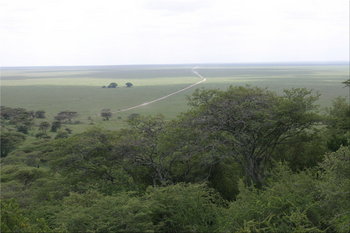 |
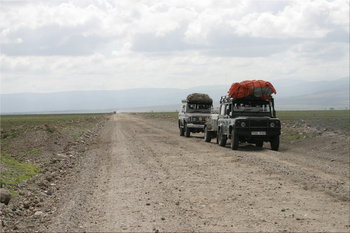 |
| Serengeti plain from a hilltop | Safari vehicles on the Serengeti Plain |
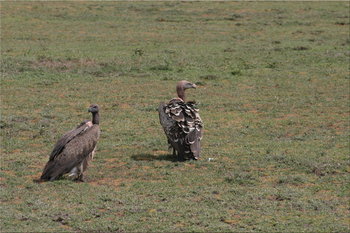 |
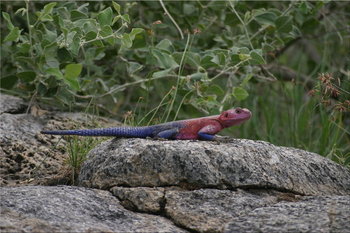 |
| Ruppel's Griffon Vultures | Red Headed Rock Agama (Caroline, what would I do without you?) |
A surefire hit with any safari tourists is a lively hippo pool, and the one we now drive to is very lively, full of splashing and puffing and grunting noises and with an unbelievable number of animals in the water. Robinson says that it is perfectly fine to sit right by the water's edge, so we do that and take lots of pictures. In the excitement, I don't even notice the crocodile (Crocodylus Niloticus - thanks Caroline) nearby, but Andrew gets a photo.
So, anyway, hippos have to stay in the water during the day, because otherwise the sunlight would dry out their skin and dehydrate them. In the night, they come out to forage. We can't tell whether the silliness in the water is friendly play or grumpiness, but it is entertaining.
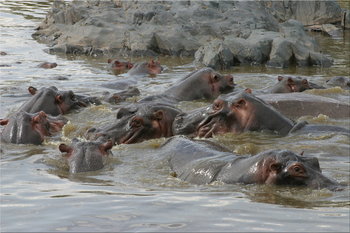 |
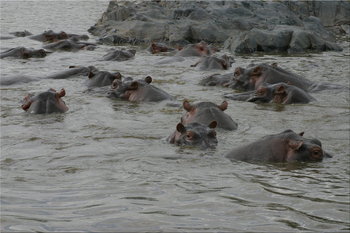 |
| Quick: How many hippopotami in this picture? | Or in this one? |
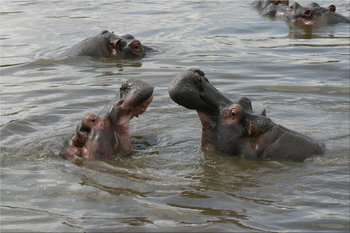 |
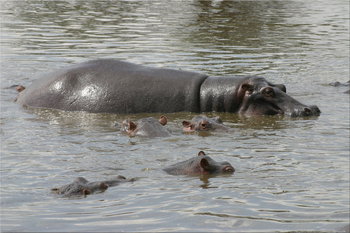 |
| Friendly kiss or grumpy argument? | I'm big, don't mess with me |
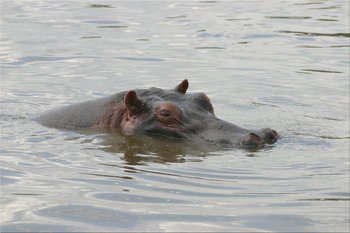 |
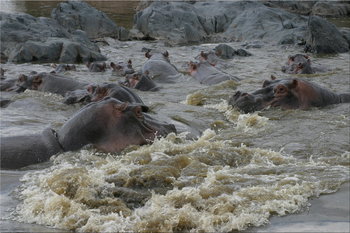 |
| Hi there | Missed an action shot, as usual |
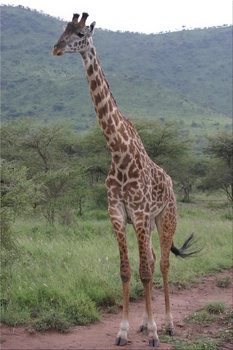 |
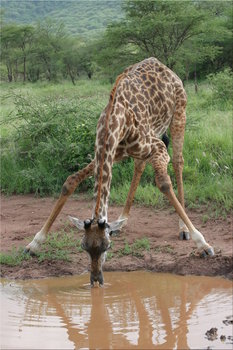 |
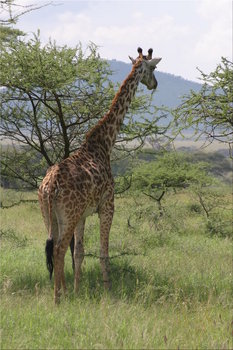 |
| Do I feel safe with these tourists around? | I guess so. Slurp, slurp. | Another giraffe, browsing |
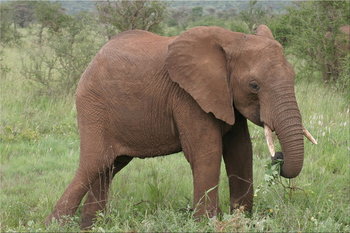 |
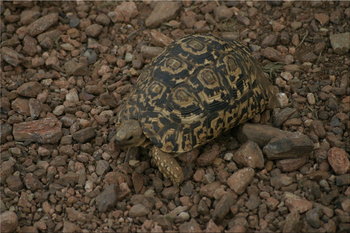 |
| Yet another elephant | Leopard tortoise, showing effective camouflage |
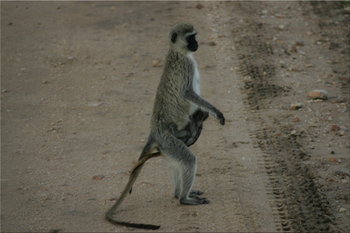 |
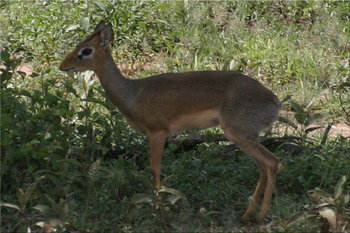 |
| Velvet monkey with baby | Dik Dik: Miniature antelope for your purse |
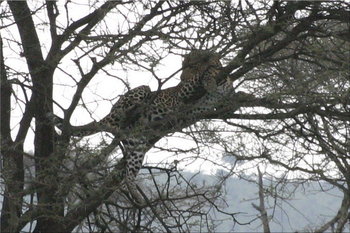 |
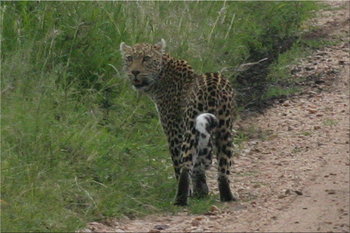 |
| Leopard in a tree, from maybe 150m away | A second leopard |
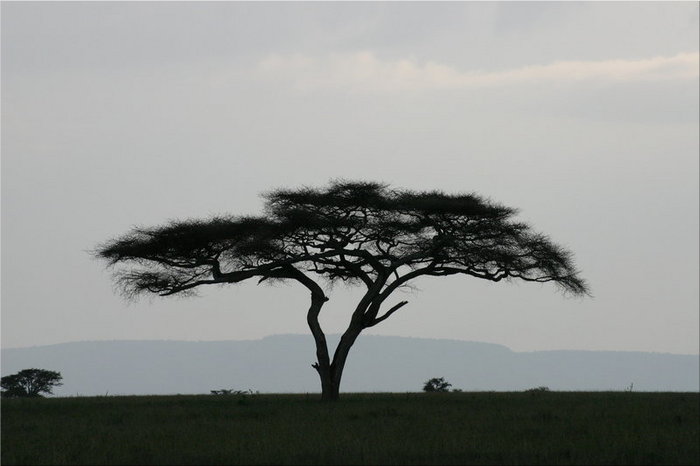
|
|
Nicely silhouetted acacia tree
|
Issa says that we have seen all of the "big 5" animals: Lion, leopard, buffalo, rhinoceros and elephant. They have the distinction of being the most dangerous to human hunters. The only thing we really missed out on is the cheetah.
Overnight there is a thunderstorm.